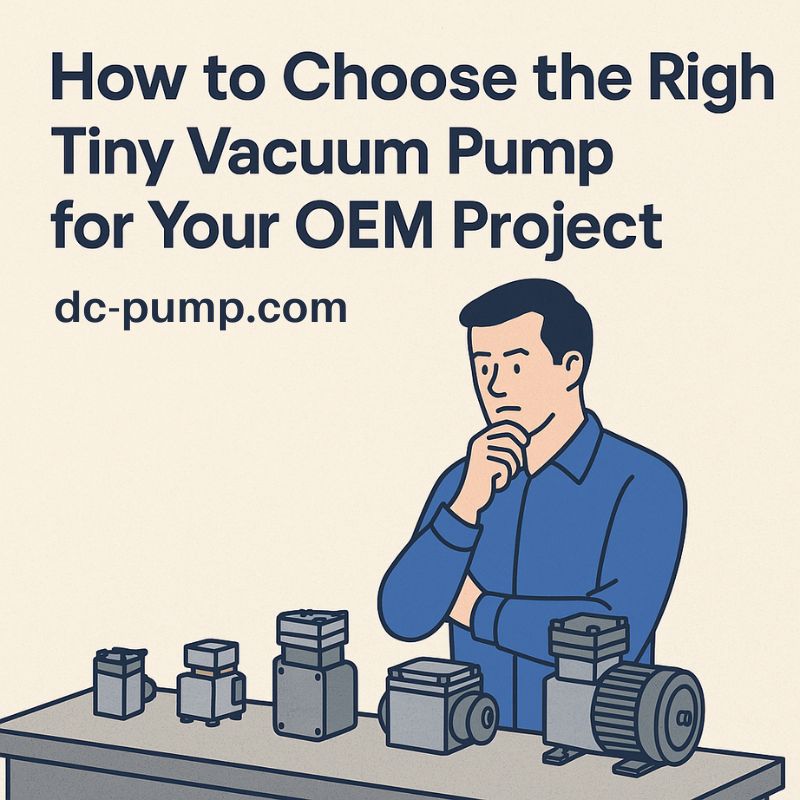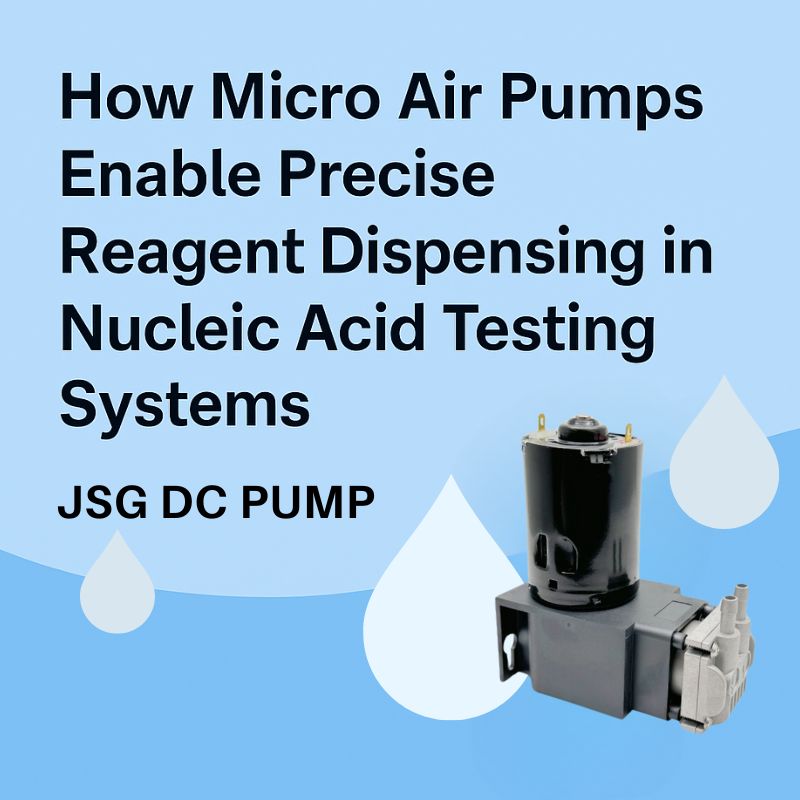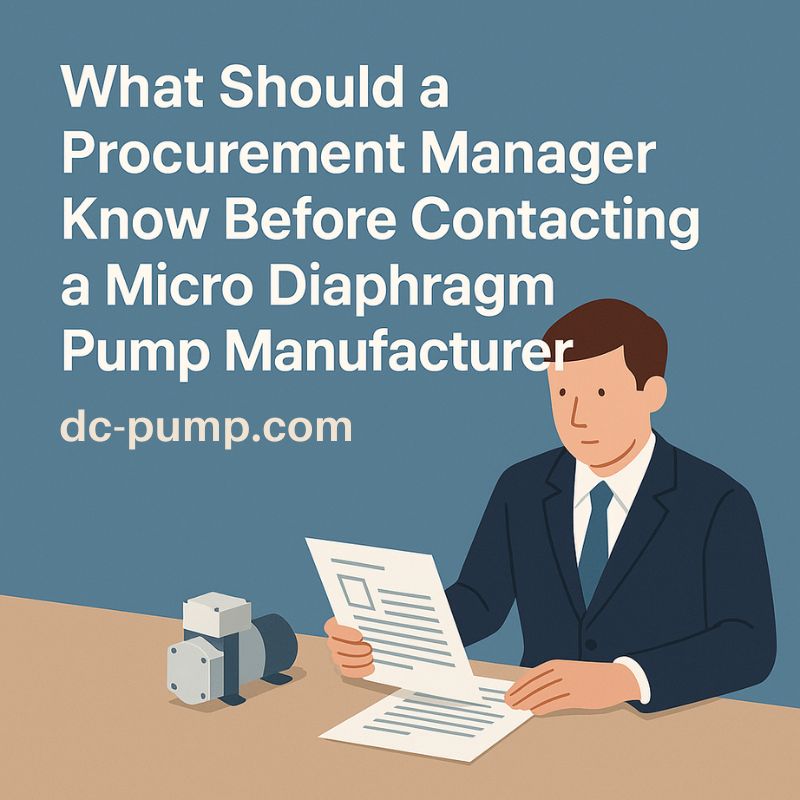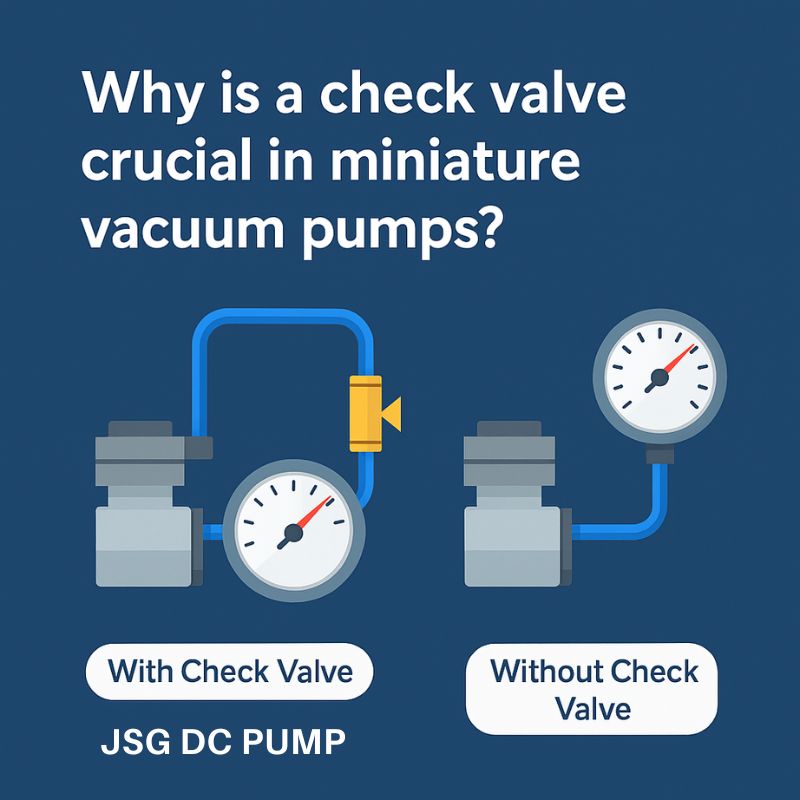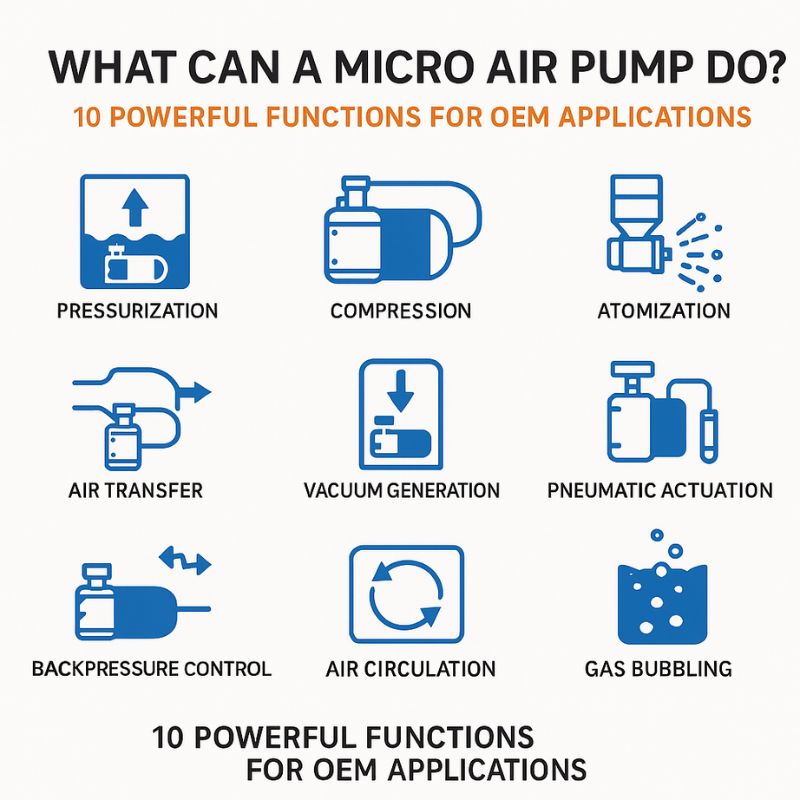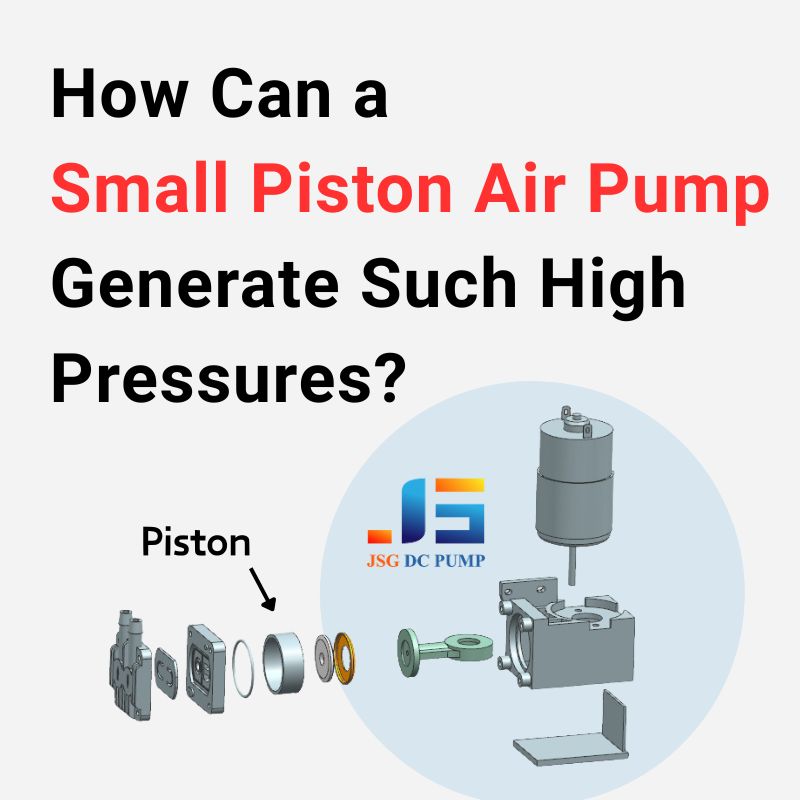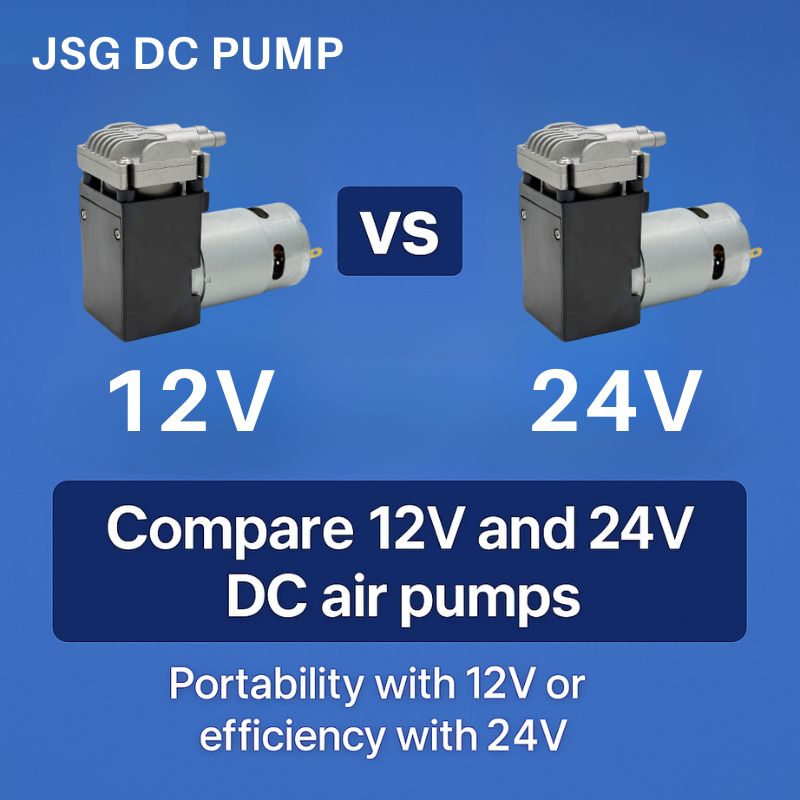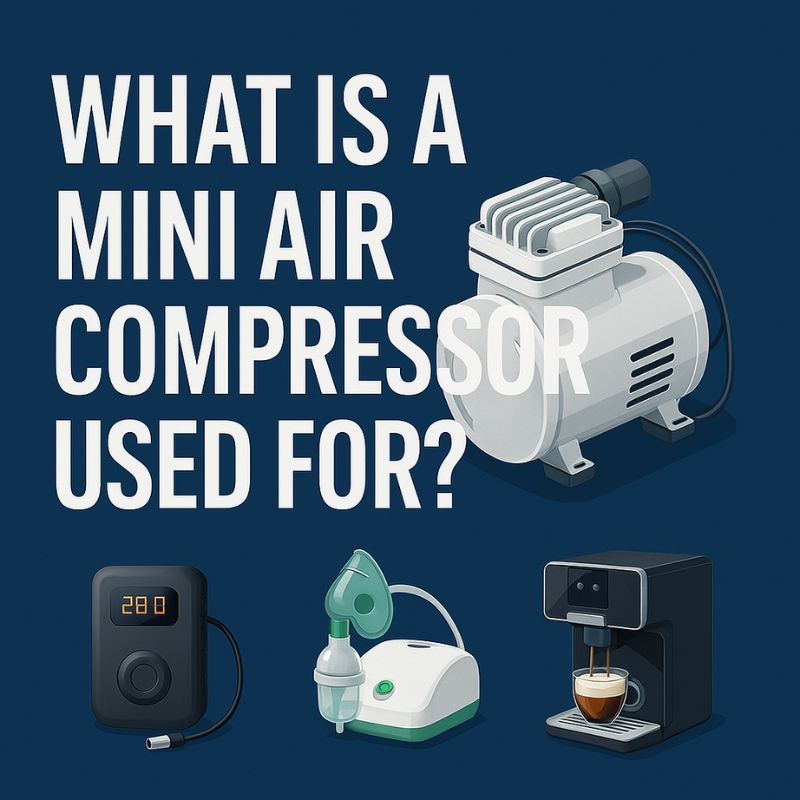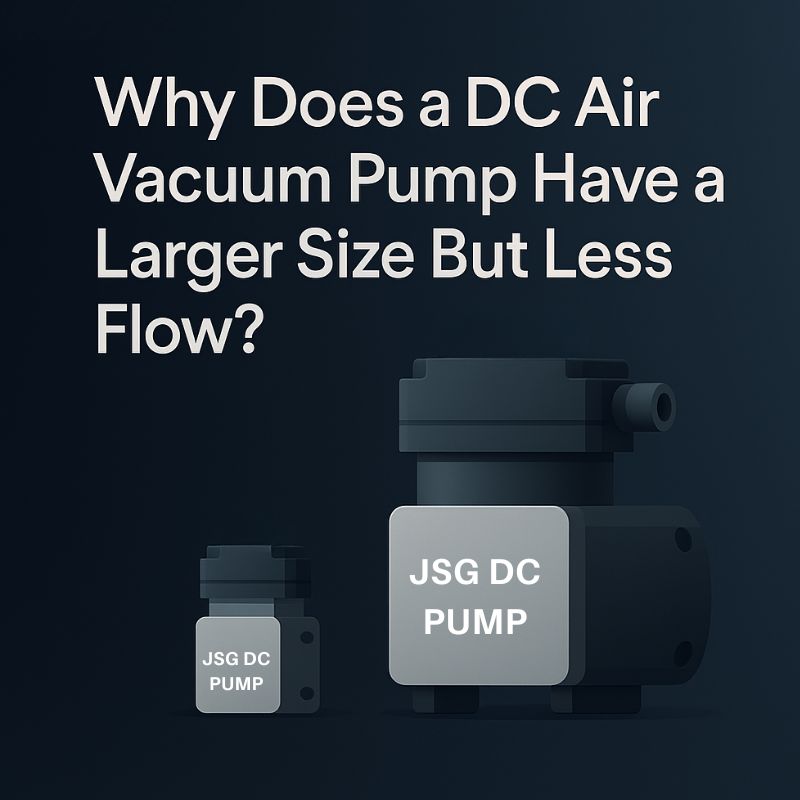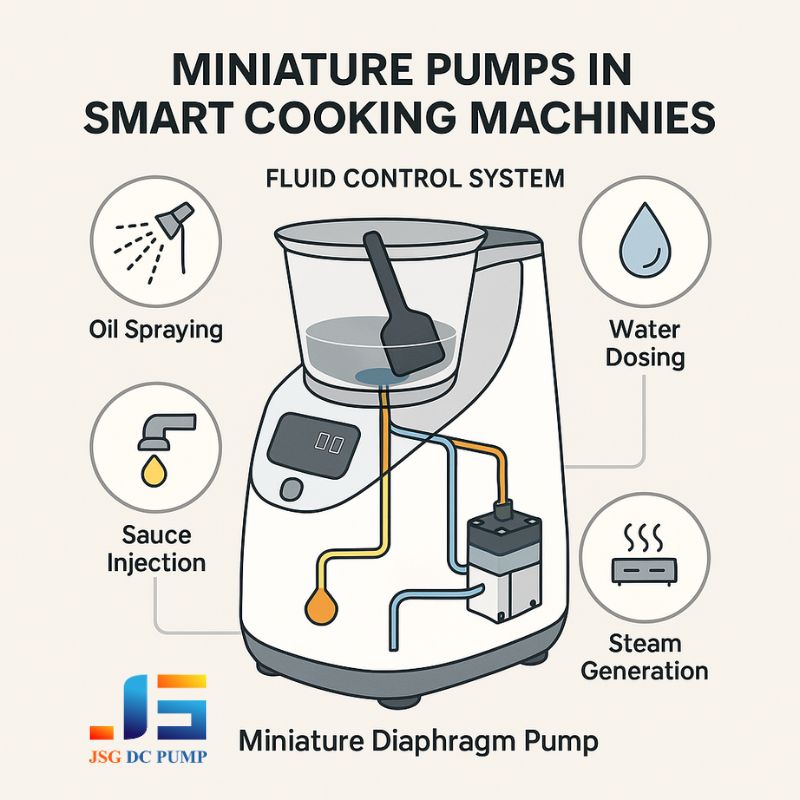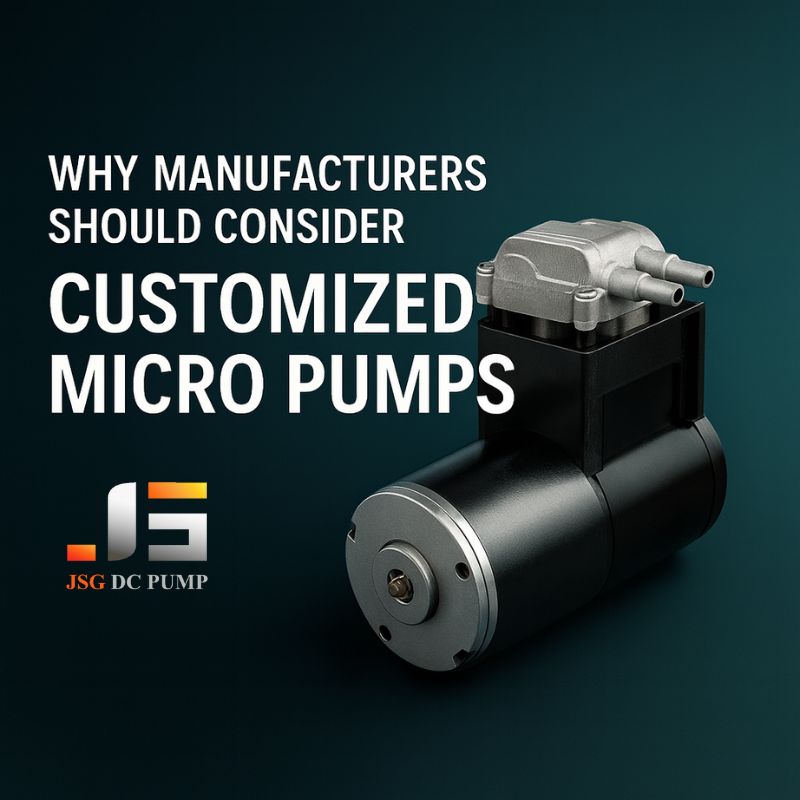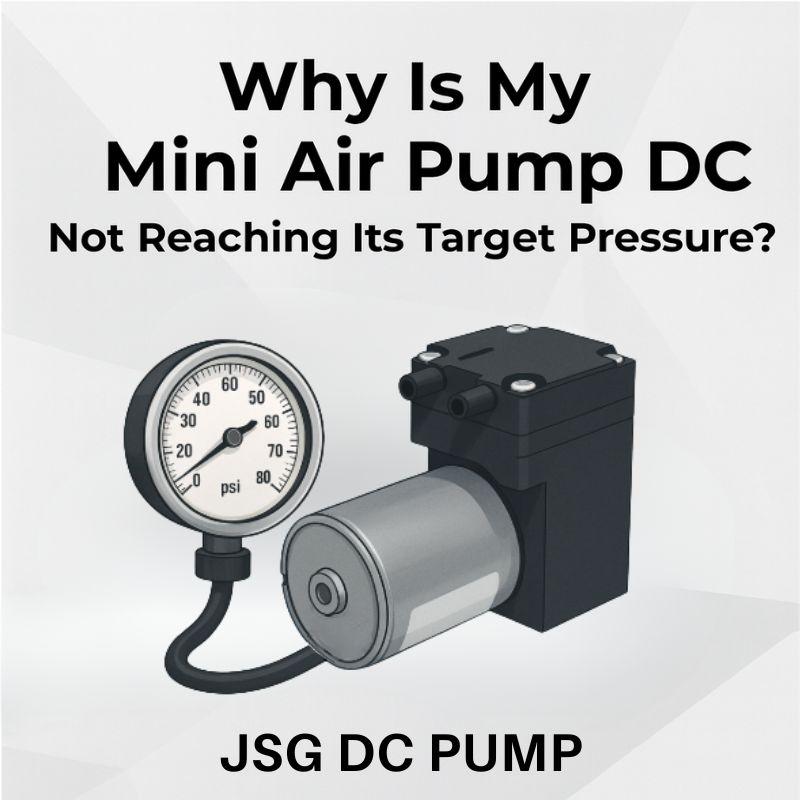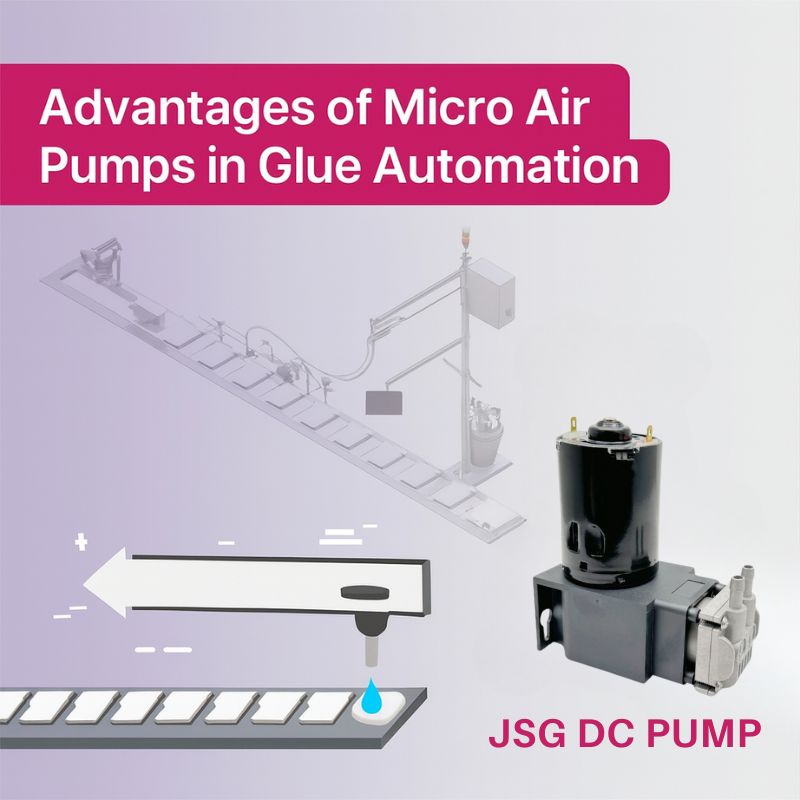Choosing the wrong micro vacuum pump can derail your entire project. It leads to endless testing, redesigns, and blown budgets. Imagine having a simple framework to select the perfect pump every time.
To choose the right tiny vacuum pump, first define your required vacuum level and flow rate. Next, select a motor type (brushed or brushless) based on lifetime needs. Finally, match the voltage to your system and ensure the physical size and form factor fit your device’s design.
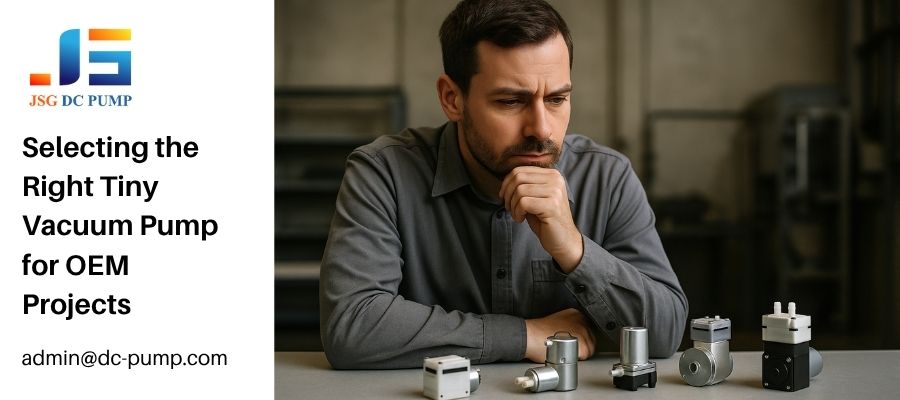 Selecting the Right Tiny Vacuum Pump
Selecting the Right Tiny Vacuum Pump
This might seem like a lot to juggle. As an engineer who has been in the micro vacuum pump industry for over two decades, I understand the pressure to get it right. Let’s break down this selection process into clear, manageable steps to guide you from initial concept to a successful final product.
How Do You Determine the Right Flow Rate and Vacuum Level for Your Application?
Picking pump specs without data is a recipe for failure. Your device won’t perform as expected, forcing you back to the drawing board. You need a clear method to define your requirements.
Start by identifying the minimum vacuum level (e.g., -80 kPa) your task requires. Then, calculate the flow rate (L/min) needed to accomplish that task within a specific time. These two parameters are the most critical filters in your search and will narrow down your options significantly.
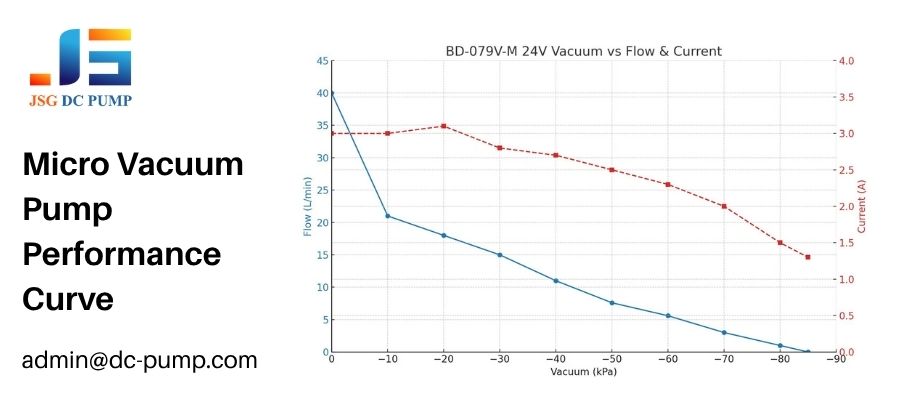 Micro Vacuum Pump Performance Curve
Micro Vacuum Pump Performance Curve
In my experience, engineers often focus on one spec, like maximum vacuum, but forget about flow rate. The two are deeply connected and create a performance curve. A pump might hit a high vacuum level, but its flow rate at that point could be near zero, making it useless for your application.
Understanding the Performance Curve
Every pump has a unique performance curve. This graph shows the inverse relationship between vacuum and flow rate.
- Max Flow Rate: This occurs at open flow, where the pump is moving the most air but creating no vacuum.
- Max Vacuum Level: This is the point where the flow rate drops to zero. The pump is holding its maximum vacuum but not moving any air.
Your ideal operating point will be somewhere along this curve, not at the extremes.
Matching Specs to Common Applications
Different applications have vastly different needs. The key is to find the “sweet spot” on the performance curve that matches your task efficiently.
| Application Example | Key Requirement | Typical Vacuum Range | Typical Flow Rate Range |
|---|---|---|---|
| Gas Analyzers | Consistent sampling | -20 to -50 kPa | 0.5 to 2 L/min |
| Medical Suction | Strong, fast pull | -70 to -90 kPa | 5 to 15 L/min |
| Pick-and-Place | Quick object grip | -50 to -80 kPa | 1 to 5 L/min |
| Lab Filtration | Steady pull-through | -60 to -85 kPa | 2 to 10 L/min |
Always aim to test a pump at your specific target vacuum and ensure the flow rate at that point is sufficient.
Should You Choose a Brushed or Brushless Motor for Your Micro Pump?
Choosing the wrong motor type can be a costly mistake. A brushed motor might fail prematurely in a high-use device, while a brushless motor might be overkill for a disposable product.
For projects requiring a long lifetime (over 3,000 hours), high efficiency, and precise control, a brushless (BLDC) motor is the superior choice. For lower-cost applications with intermittent or shorter lifespan requirements, a traditional brushed DC motor offers excellent value and simplicity.
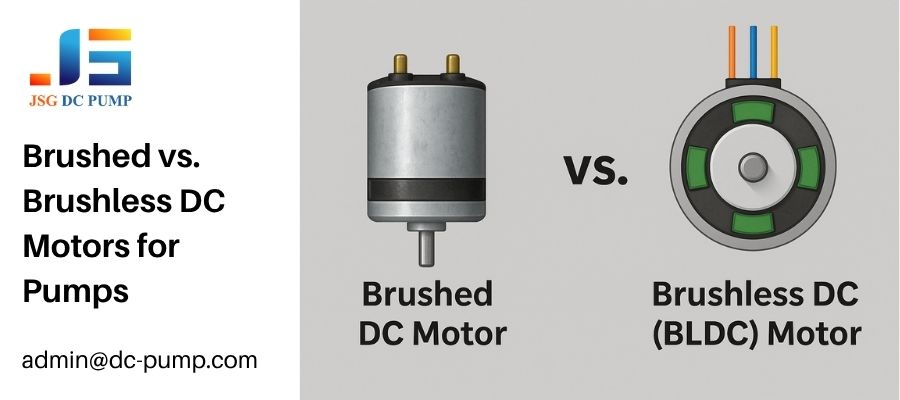 Brushed vs. Brushless DC Motors for Pumps
Brushed vs. Brushless DC Motors for Pumps
I’ve worked on hundreds of OEM projects, and the motor choice is always a central point of discussion. It’s a trade-off between upfront cost and long-term reliability. The decision directly impacts your product’s performance, lifespan, and final price point.
The Core Differences
The fundamental difference lies in how the motor commutes. Brushed motors use physical carbon brushes to make contact, which wear down over time. Brushless motors use an electronic controller, resulting in no wearing parts, which dramatically extends their life.
Decision-Making Table: Brushed vs. Brushless
Use this table as a quick guide to help you decide which motor type aligns with your project’s goals.
| Feature | Brushed DC Motor | Brushless DC (BLDC) Motor |
|---|---|---|
| Lifetime | Shorter (typically 500 – 3,000 hours) | Much Longer (often >10,000 hours) |
| Cost | Lower initial cost | Higher initial cost |
| Control | Simple (voltage controls speed) | Complex (needs a controller, enables PWM) |
| Efficiency | Lower | Higher (less energy lost to heat/friction) |
| Electrical Noise | High (due to sparks from brushes) | Very Low |
| Best For | Cost-sensitive or disposable devices | Medical, industrial, high-reliability devices |
A brushless motor is an investment in reliability. For a medical device that runs 24/7, it’s a necessity. For a simple consumer gadget used occasionally, a brushed motor is often the more practical and cost-effective solution.
What Voltage and Power Constraints Should You Consider?
Integrating a pump with the wrong voltage is a non-starter. It can damage your electronics or simply fail to run, causing major delays. Your pump must match your system’s power architecture.
Your first step is to match the pump’s nominal voltage (e.g., 12V or 24V) to your product’s power supply. Also, you must verify that your power source can provide the pump’s peak current draw, which typically occurs at startup or under maximum load.
I always advise OEM clients to think about power early in the design phase. A pump is often one of the most power-hungry components in a portable device. Planning for its voltage and current needs from the beginning prevents issues with battery life and the need for oversized power supplies.
Aligning With Your System’s Power
Most compact electronic devices operate on low-voltage DC power. The most common options you will encounter for micro pumps are 12V and 24V, but other voltages like 3V, 5V, or 6V are available for smaller, battery-powered applications.
- Standardization: Sticking to a common system voltage like 12V or 24V simplifies your power supply design.
- Power Consumption: A pump’s power draw is measured in watts (Voltage x Current). This is crucial for calculating battery life in portable devices.
Peak Current vs. Rated Current
This is a critical detail that is often overlooked.
- Rated Current: The current the pump draws under its typical, continuous operating load.
- Peak/Stall Current: The current the pump draws for a brief moment when it starts up or is under heavy load. Your power supply must be able to handle this peak current without its voltage dropping, or the pump may fail to start.
I recommend a power supply rated for at least 1.5 times the pump’s rated current to safely cover any startup spikes.
Why is the Pump’s Physical Size and Form Factor so Important?
Finding a pump with great specs is useless if you can’t fit it into your device. The pump’s physical dimensions and features can make or break your product design, forcing compromises or complete redesigns.
The pump’s size, mounting points, and port locations are critical for successful OEM integration. You must verify that the pump’s 3D model fits within your mechanical enclosure and that its air inlet/outlet ports are positioned for easy and efficient tube routing.
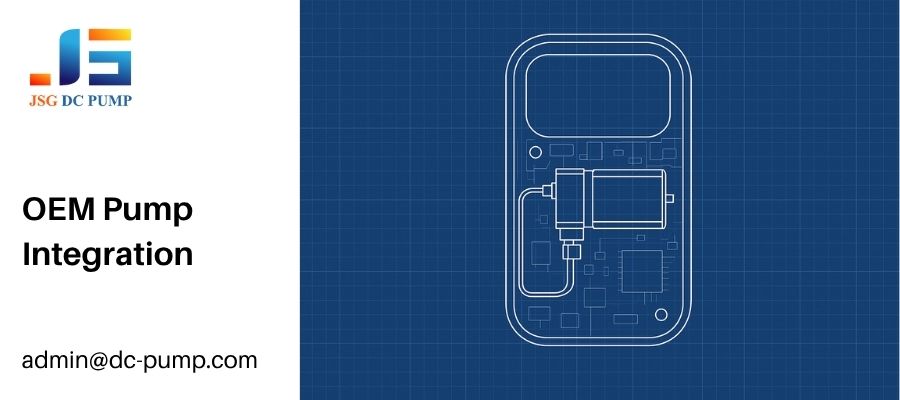 OEM Pump Integration in CAD Software
OEM Pump Integration in CAD Software
In my role at JSG, a large part of what we do is providing detailed CAD files and mechanical drawings to our OEM partners. We understand that integration is a puzzle. We aim to provide all the pieces so our clients can see exactly how the pump will fit long before they order a physical sample.
Key Mechanical Considerations
When you evaluate a pump for your project, look beyond the basic length, width, and height.
- Mounting Features: Does the pump have built-in mounting brackets or rubber feet? How are they positioned? This affects how you’ll secure the pump and isolate it from vibration.
- Port Orientation: Are the inlet and outlet ports on the top, side, or end? Their location will dictate your tubing layout and can affect the overall size of your final assembly.
- Weight: For handheld or portable devices, every gram matters. The pump’s weight can impact the ergonomics and usability of your final product.
Planning for Noise and Vibration
A pump’s form factor also influences noise, vibration, and harshness (NVH). A well-designed pump will include features to minimize this.
| Feature | How It Helps with Integration |
|---|---|
| Rubber Mounting Feet | Isolates vibration from the product chassis, reducing operational noise. |
| Symmetrical Design | Offers more flexibility in how the pump is oriented within the enclosure. |
| Durable Housing | Protects the internal components from external forces during assembly and use. |
| Compact Footprint | Saves valuable internal space for other components like batteries or electronics. |
Considering these mechanical details early will save you headaches and ensure a smooth, well-integrated final product.
How Can You Accurately Evaluate a Tiny Pump’s Real-World Lifetime?
A datasheet that claims a 10,000-hour lifetime can be misleading. If the pump fails after just 1,000 hours in your actual device, it can lead to angry customers and costly warranty claims.
To accurately evaluate lifetime, you must understand the testing conditions behind the datasheet numbers. A true evaluation involves running the pump in your own application under real-world loads, temperatures, and duty cycles. This testing provides the only reliable data for your product’s lifespan.
At JSG DC PUMP, we are transparent about our lifetime testing protocols. We test our pumps for thousands of hours under specified loads. However, I always tell our clients that their own application is the ultimate test. A pump used intermittently in a cool environment will last much longer than one running 24/7 at high temperatures.
Differentiating Motor and Diaphragm Lifetimes
The lifetime of a micro diaphragm pump is typically limited by two key components.
- Motor Lifetime: As we discussed, a brushless motor can last for 10,000+ hours, while a brushed motor’s life is limited by its brushes, usually under 3,000 hours.
- Diaphragm/Valve Lifetime: The flexible diaphragm and valves are also wear components. They are typically made from durable elastomers like EPDM or FKM. Their lifespan depends on the pumping medium, pressure, and cycle speed.
Often, the motor is the first component to fail in a brushed pump, while the diaphragm may be the limiting factor in a brushless pump designed for extreme longevity.
Factors That Influence Real-World Lifetime
Never take a datasheet value at face value. Always consider these variables:
- Duty Cycle: Is the pump running continuously (100%) or intermittently (e.g., 10% on, 90% off)? Intermittent use drastically extends life.
- Ambient Temperature: Heat is the enemy. A pump running in a hot, poorly ventilated enclosure will have a much shorter life than one in a cool, open environment.
- Load: A pump running at a low vacuum level will last longer than one constantly working at its maximum rated pressure.
I strongly recommend requesting samples and starting your own life tests as early as possible in the design cycle.
What Customization Options Can Optimize a Pump for Your Specific OEM Needs?
An off-the-shelf pump rarely fits a unique product perfectly. You might need a specific flow rate, a different voltage, or special wiring, forcing you to make design compromises around the pump.
Working with a manufacturer that offers OEM customization allows you to tailor the pump to your exact needs. This can include adjusting performance, changing the voltage, adding custom connectors, and even branding the pump with your logo for a fully integrated solution.
This is where a true partnership with a component supplier shines. As a manufacturer, our goal at JSG is not just to sell pumps, but to provide an engineering solution. We work directly with our OEM clients’ design teams to modify our base models to meet their specific performance and integration requirements.
Common OEM Customization Requests
When we collaborate with product developers, the conversation often goes beyond the standard datasheet. Here are some of the most common ways we can tailor a pump:
- Performance Tuning: We can adjust the motor speed and stroke to fine-tune the flow and pressure to a specific operating point, often improving efficiency for that single task.
- Custom Voltage: While 12V and 24V are standard, we can often produce windings for other voltages to match a unique power system.
- Electrical Connectors & Wires: We can add specific connectors, change wire lengths, or use different wire gauges to simplify your assembly process and reduce costs.
Partnering for Success
Beyond the hardware, a good OEM partner provides crucial support.
| Service | Why It Matters for OEMs |
|---|---|
| Rapid Prototyping | Get customized samples quickly to validate your design and accelerate your development timeline. |
| Direct Engineering Access | Solve technical challenges faster by communicating directly with the engineers who designed the pump. |
| Material Selection | We can help you choose the right diaphragm and valve materials (e.g., EPDM, FKM) for chemical compatibility. |
| Private Labeling | For large volume orders, we can add your branding and part numbers directly onto the pump. |
Choosing a supplier that offers these services can be just as important as choosing the pump itself. It transforms them from a simple vendor into a valuable partner in your product’s success.
Conclusion
Choosing the right tiny vacuum pump requires a methodical approach — one that balances performance, lifetime, and integration efficiency.
By carefully defining your requirements and working with a knowledgeable engineering partner, you can reduce trial-and-error, optimize design time, and achieve long-term product reliability.
At JSG DC PUMP, we specialize in helping OEM clients design, customize, and integrate micro vacuum and diaphragm pumps into their systems with precision and confidence.
Whether your project demands compact size, high efficiency, or extended durability, our engineering team is ready to support your next innovation.
📩 Contact our team: admin@dc-pump.com
🌐 Learn more: dc-pump.com
JSG DC PUMP — Your Trusted OEM Partner for High-Performance Micro Pumps.


